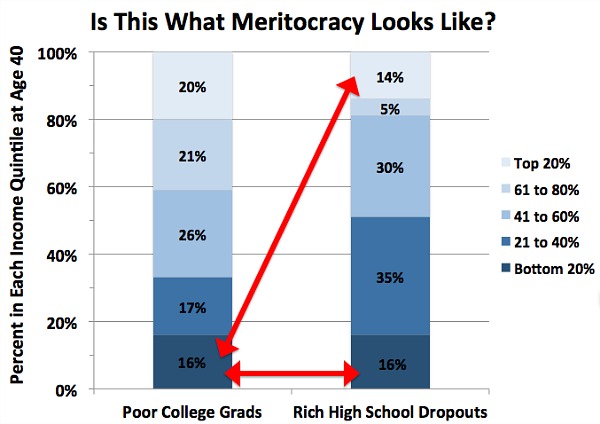That’s because, in large part, inequality starts in the crib. Rich parents can afford to spend more time and money on their kids, and that gap has only grown the past few decades. Indeed, economists Greg Duncan and Richard Murnane calculate that, between 1972 and 2006, high-income parents increased their spending on “enrichment activities” for their children by 151 percent in inflation-adjusted terms, compared to 57 percent for low-income parents.
But, of course, it’s not just a matter of dollars and cents. It’s also a matter of letters and words. Affluent parents talk to their kids three more hours a week on average than poor parents, which is critical during a child’s formative early years. That’s why, as Stanford professor Sean Reardon explains, “rich students are increasingly entering kindergarten much better prepared to succeed in school than middle-class students,” and they’re staying that way.
Even poor kids who do everything right don’t do much better than rich kids who do everything wrong. Advantages and disadvantages, in other words, tend to perpetuate themselves. You can see that in the above chart, based on a new paper from Richard Reeves and Isabel Sawhill, presented at the Federal Reserve Bank of Boston’s annual conference, which is underway.
Specifically, rich high school dropouts remain in the top about as much as poor college grads stay stuck in the bottom — 14 versus 16 percent, respectively. Not only that, but these low-income strivers are just as likely to end up in the bottom as these wealthy ne’er-do-wells. Some meritocracy.
read more at washingtonpost.com




